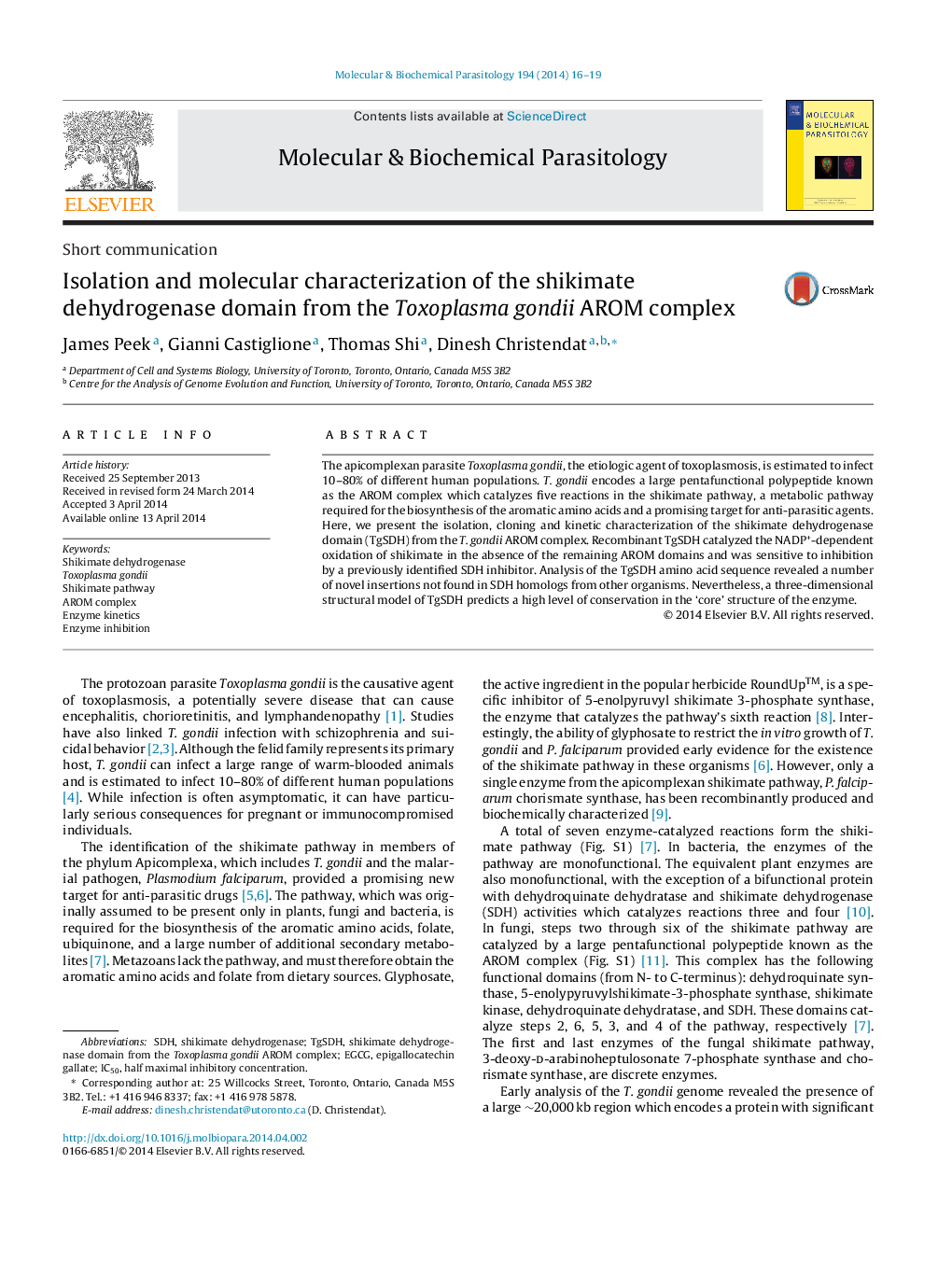| Article ID | Journal | Published Year | Pages | File Type |
|---|---|---|---|---|
| 2829781 | Molecular and Biochemical Parasitology | 2014 | 4 Pages |
•The shikimate dehydrogenase domain of the Toxoplasma gondii AROM complex (TgSDH) was recombinantly expressed.•The isolated TgSDH domain catalyzed the oxidation of shikimate in vitro.•The kinetic properties of the recombinant enzyme were determined.•The sensitivity of TgSDH to potential inhibitors was evaluated.•A structural model of TgSDH revealed a number of novel surface-exposed loops.
The apicomplexan parasite Toxoplasma gondii, the etiologic agent of toxoplasmosis, is estimated to infect 10–80% of different human populations. T. gondii encodes a large pentafunctional polypeptide known as the AROM complex which catalyzes five reactions in the shikimate pathway, a metabolic pathway required for the biosynthesis of the aromatic amino acids and a promising target for anti-parasitic agents. Here, we present the isolation, cloning and kinetic characterization of the shikimate dehydrogenase domain (TgSDH) from the T. gondii AROM complex. Recombinant TgSDH catalyzed the NADP+-dependent oxidation of shikimate in the absence of the remaining AROM domains and was sensitive to inhibition by a previously identified SDH inhibitor. Analysis of the TgSDH amino acid sequence revealed a number of novel insertions not found in SDH homologs from other organisms. Nevertheless, a three-dimensional structural model of TgSDH predicts a high level of conservation in the ‘core’ structure of the enzyme.
Graphical abstractThe isolated C-terminal domain of the Toxoplasma gondii AROM complex possesses in vitro shikimate dehydrogenase (SDH) activity. Structural modeling suggests the protein has a number of unique surface-exposed loops.Figure optionsDownload full-size imageDownload high-quality image (121 K)Download as PowerPoint slide
